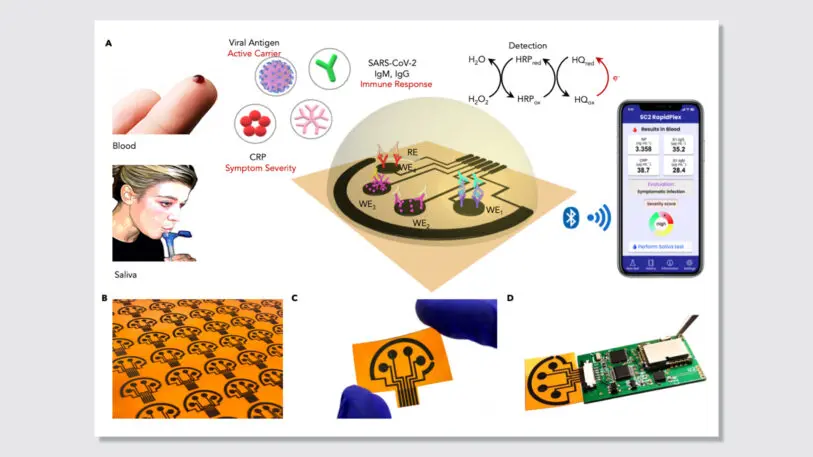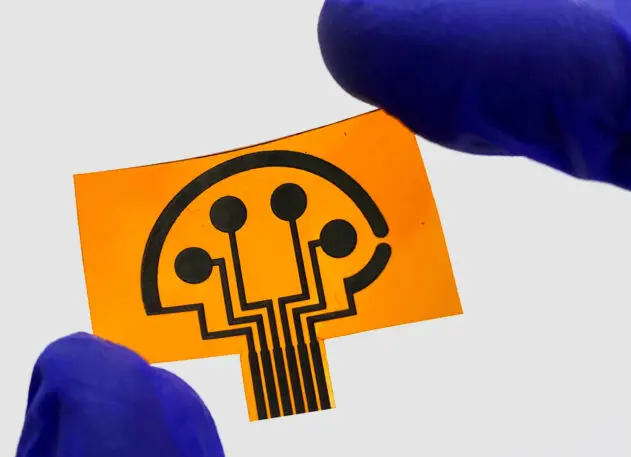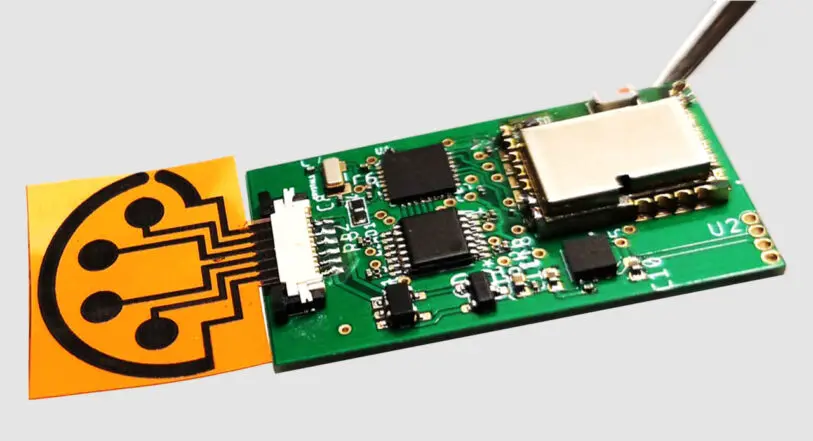One of the hardest parts of controlling COVID-19 is that it’s very difficult to know if you or someone you know is carrying it asymptomatically. So you might let your guard down, spend time in close proximity to someone else, and help it spread. Testing is useful to curb this issue, but the wait on a test result can still take days. So it’s difficult to say for sure, at any given moment, if you actually have COVID-19 or not.
A new device being developed at Caltech, dubbed the SARS-CoV-2 RapidPlex, could put this uncertainty to an end. It’s a SARS-CoV-2 sensor that’s being designed for use at home. When it comes into contact with a drop of blood or saliva, it can determine if you’re infected with the SARS-CoV-2 virus in a mere 10 minutes. The results of the test could be beamed right to your phone over Bluetooth.


Thus far, Gao’s lab has tested the device successfully with samples from 19 patients who had active COVID-19 infections. But Gao says that the sensor still needs to be validated at a larger scale in a clinical setting such as a hospital to confirm the work. Then the technology itself needs to be approved by the government, mass-produced, and packaged into some sort of kit that a person could order.
In Gao’s description, that kit sounds a lot like a pregnancy test (albeit one that requires you to add a few drops to the device after providing your sample). How long will it take before it’s widely available? “Realistically, I think like a year. If we really push it,” says Gao. Gao is open to both commercializing the technology himself and licensing the technology out to companies that would like to use it.

It’s all incredibly promising, and yet, any at-home COVID-19 test stemming from this technology will probably take longer to come to market than a validated vaccine. That doesn’t mean Gao’s work, and this product, aren’t worth pursuing. Even after we have a vaccine, our personal immunity won’t last forever, and COVID-19 could be with us for years. Should the at-home sensor arrive too late for COVID-19, Gao suggests that the technology will help us get through the next pandemic, too. Imagine a world where, yes, there is a potentially deadly virus in the air. But in all of 10 minutes, you and a friend can both run a simple test and know it’s safe to grab dinner together.
Recognize your brand’s excellence by applying to this year’s Brands That Matter Awards before the early-rate deadline, May 3.
